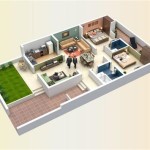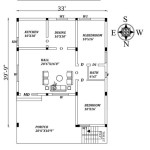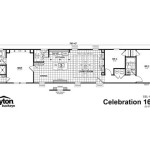Essential Aspects of Commercial Floor Plans
Commercial floor plans are essential for businesses as they provide a blueprint for the organization and functionality of the workspace. They serve as a guide for efficient space planning, ensuring the best utilization of the available area while optimizing workflow.
1. Types of Commercial Floor Plans
Various types of commercial floor plans exist to cater to different business needs:
- Open Office Plan: Maximizes collaboration and promotes transparency, with workstations arranged in an open space.
- Cellular Office Plan: Provides privacy and focus, with individual enclosed offices for employees.
- Mixed-Use Plan: Combines open and cellular office areas, offering flexibility and accommodating different workstyles.
- Flexible Space Plan: Allows for easy reconfiguration and adaptation to changing business needs, using movable walls or partitions.
2. Scale and Dimensions
Accuracy in scale and dimensions is crucial for effective commercial floor plans. Architects use specific scales to represent the actual size of the space, ensuring that furniture, equipment, and other elements are correctly placed.
3. Space Allocation
Efficient space allocation maximizes productivity and minimizes wasted space. Floor plans designate areas for workstations, meeting rooms, break areas, and other functional zones based on the business requirements.
4. Furniture and Equipment Layout
The layout of furniture and equipment is essential for optimizing workflow. Floor plans indicate the placement of desks, chairs, storage units, and technological equipment to ensure efficient movement, access to resources, and ergonomic comfort.
5. Circulation and Accessibility
Proper circulation and accessibility are vital for safety and efficiency. Floor plans include designated areas for walkways, corridors, and emergency exits, ensuring adequate movement of people and equipment.
6. Functionality and Flow
Commercial floor plans optimize functionality by creating a logical flow of traffic. They strategically arrange workstations, meeting areas, and support spaces to minimize disruptions and maximize productivity.
7. Compliance and Safety
Floor plans adhere to building codes and regulations regarding accessibility, fire safety, and other safety standards. They ensure compliance with ADA requirements and provide clear evacuation routes in case of emergencies.
8. Collaboration and Communication
Floor plans can promote collaboration and communication by incorporating open and inviting spaces for team interactions. They create designated areas for informal meetings, brainstorming sessions, and shared resources.
9. Branding and Identity
Commercial floor plans can incorporate branding elements and company identity by using specific colors, textures, and furnishings. This creates a cohesive and professional environment that reflects the business's culture and values.
10. Technology Integration
Modern floor plans consider the integration of technology. They include designated areas for wiring, data centers, and access points to ensure seamless connectivity and support for technological advancements.
Conclusion
Commercial floor plans are integral to creating efficient, functional, and aesthetically pleasing workspaces. By considering essential aspects such as scale, space allocation, functionality, and compliance, businesses can optimize their floor plans to support their operations, enhance employee productivity, and build a strong corporate identity.

Commercial Building Plans With Dimensions

Commercial Floor Plans

Commercial Floor Plan Office Design

Pin Page

Commercial Floor Plan Office Design

Commercial Floor Plans

Commercial Building Plans And Designs

Commercial Building Floor Plan 624 35561

2d Floor Plan Commercial Real Estate It All
Example Floor Plan For A Multi Zone Commercial Building Scientific Diagram








